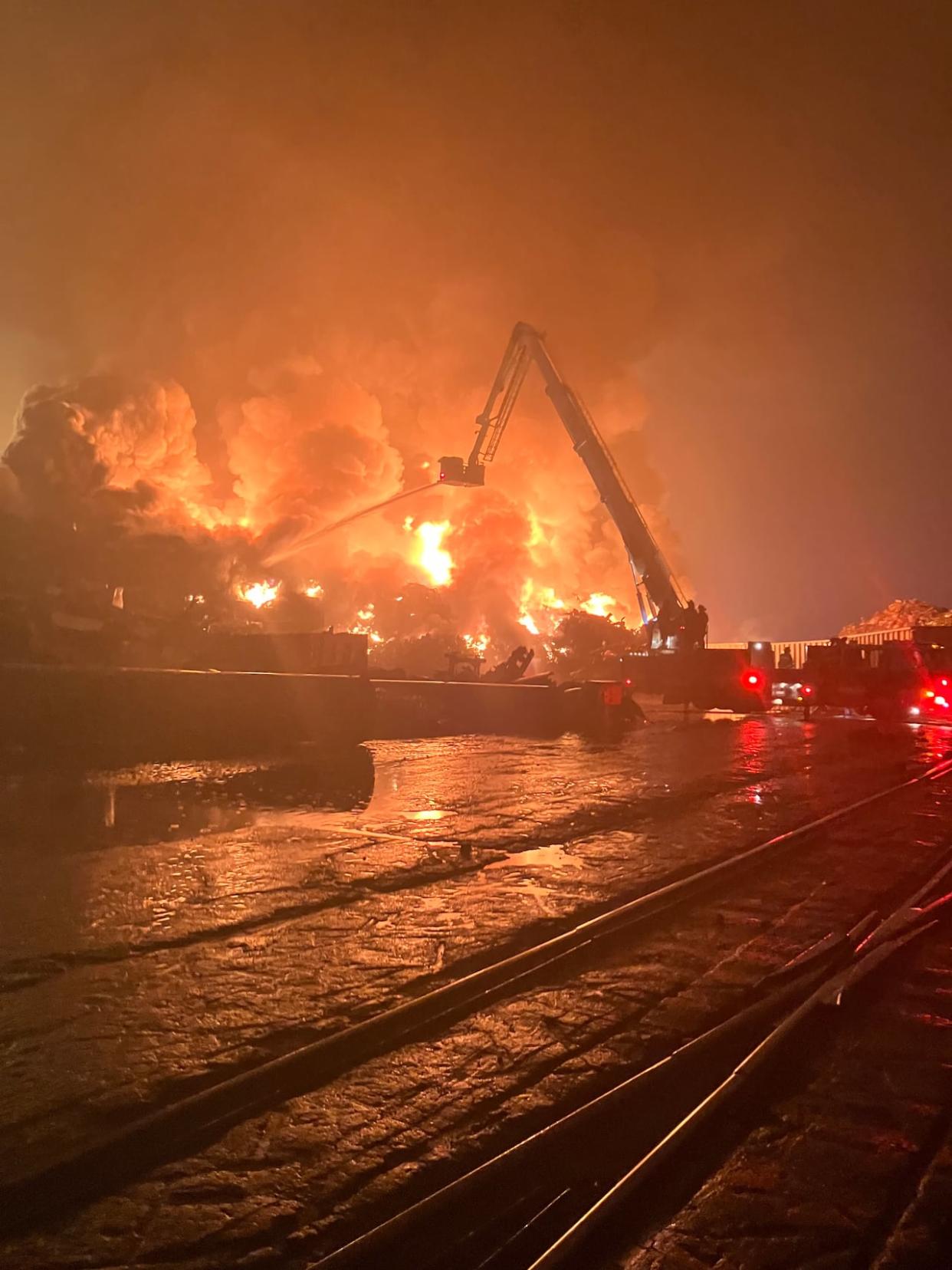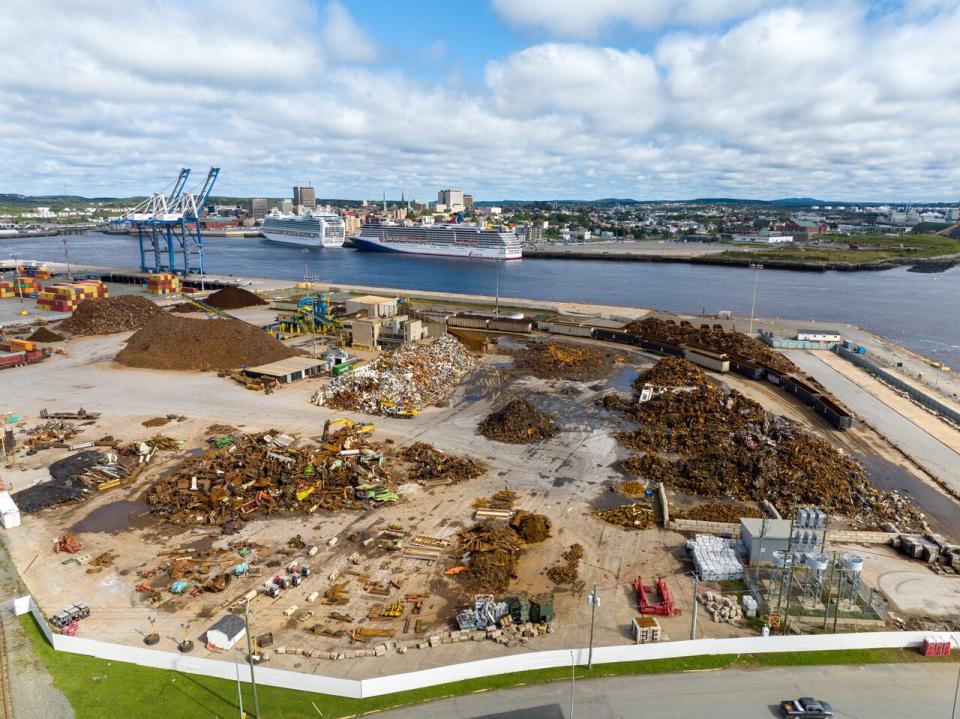Task force into AIM fire on Saint John waterfront says location is 'entirely inappropriate'

The task force examining the fire that burned for two days at American Iron and Metal in Saint John says future fires at the scrapyard are likely, and "a catastrophic fire similar to that of Sept. 14, 2023, could recur."
It also found that AIM's waterfront location, not far from hundreds of west side homes, is "entirely inappropriate given its now known hazards and risks."
Findings of the task force were announced by Attorney General Ted Flemming during a live-streamed event on Tuesday morning.
The report paints a disturbing picture of the circumstances surrounding the fire and how close the impact came to being "disastrous" for the community.
Flemming stressed these were findings and not recommendations and said the task force had neither the power nor the mandate to shut down the recycling plant, where operations have been suspended since the fire..
That decision, he said, rests with regulatory agencies.
Premier Blaine Higgs created the task force while the fire was still burning and promised the the investigation would "get to the bottom" of what happened and determine whether "that operation fit to be operating where it is today?"
'Profound impacts on our community'
No one was injured in the fire, but it produced a hazardous smoke that wafted over the city and provoked a city advisory that residents take shelter or wear masks.
The fire "had profound impacts on our community," said the task force's final report .
"Emergency orders were issued. Residents were ordered to shelter in-place. Schools and businesses were closed, impacting the local economy and a sizeable portion of the downtown workforce.
"Air quality warnings required hospitals and other buildings to restrict air flow to protect vulnerable residents, while the public sheltered indoors and watched with mounting alarm as the fire sent plumes of toxic smoke, ash and soot throughout the City of Saint John and beyond."

AIM's Saint John recycling plant has been idle since the province ordered the suspendion of operations during the fire. (Roger Cosman/CBC)
The report highlighted a number of problems leading up to the Sept. 14 fire, including the company's initial environment impact assessment, which "did not adequately address key environmental issues or events such as fires, explosions, and the potential release of contaminating substances."
It also said the company's operations and risks are "significantly different than those AIM presented at the time it obtained its regulatory approval."
The task force released 12 findings:
The environmental impact assessment submitted by AIM in 2010 did not adequately address key issues or events such as fires, explosions, and the potential release of contaminating substances.
AIM's operations and its risks are significantly different from those AIM presented at the time it obtained its regulatory approval to operate an industrial metal shredder and expanded its site more than sixfold.
The scrap metal piles maintained by AIM exceeded the size recommended by the national fire code by two to 2 to 2½ times.
AIM did not, have an emergency plan capable of effectively responding to the Sept. 14 fire or a similar fire in the future.
The Saint John Fire Department doesn't have the equipment or resources to effectively respond to a fire like the one at AIM.
The City of Saint John water resources are not sufficient to effectively respond to such a fire.
Had the the JDI vessel Osprey — which played major role in putting out the fire with seawater — not been in port that day, the repercussions for the community would have been disastrous.
The AIM site was contaminated as a result of the fire. Contaminants were also released into the air and the water, and significant additional testing and analysis is required to assess the existence and scope of the impact.
AIM operations carry a significant risk of explosion and fire, with a high likelihood of future fires at the AIM site, including a material risk that a catastrophic fire similar to the one Sept. 14 could happen.
The location of the AIM operation, in the middle of the Saint John community, adjacent to the harbour and a residential neighbourhood, is entirely inappropriate given its now known hazards and risks.
The negative socio-economic impacts of the AIM operations at its present site are unacceptable to the City of Saint John, its residents, and surrounding communities.
The AIM operations are an environmental, health and safety risk to Saint John, surrounding communities and their citizens
The province required a preliminary report from AIM, which said the fire was first discovered at about 1:45 a.m. on Sept. 14 by an industrial mechanic working overnight on maintenance of the shredder.
The employee "noticed an odour" and "proceeded to investigate." That's when he saw the flames coming from the "in-feed scrap pile. He immediately alerted 911, followed by the site manager."


